“Once you’ve reached menopause,
just because you can’t get pregnant doesn’t mean
you can’t contract a sexually transmitted infection (STI)”.1
Umbrella
What may the Sexually Transmitted Infections Umbrella include?
Depending on the Source (DotS) this Umbrella may include:
- Sexually Transmissible Infections
- Sexually Transmitted Diseases (STDs)
- Sexually Transmitted Infections (STIs)
- Venereal Diseases (VD)
Terminology
Are sexually transmitted infections (STIs) also called sexually transmitted diseases (STDs)?
In Sexually Transmitted Infections the Office on Women’s Health, United States Department of Health and Human Services, Womenshealth.gov explain:
“Sexually transmitted infections (STIs) are also called sexually transmitted diseases, or STDs”.2
Sexually Transmitted Infections
What are sexually transmitted infections (STIs)?
DotS the definition of STIs may vary. The (Australian) Jean Hailes for Women’s Health’s (JH) definition is:
“An STI is an infection spread from one person to another during sex”.3
Sexually Transmitted Diseases
What are sexually transmitted diseases (STDs)?
DotS the definition of STDs may vary. The (United States) MedlinePlus’ definition is:
“Sexually transmitted infections (STIs), or sexually transmitted diseases (STDs), are infections that are passed from one person to another through sexual contact. They are usually spread during vaginal, oral, or anal sex. But sometimes they can spread through other sexual contact involving the penis, vagina, mouth, or anus. This is because some STIs, like herpes and HPV, are spread by skin-to-skin contact”.4
How Many
How many STIs are there?
In Sexually Transmitted Infections (STIs): Overview the World Health Organization (WHO) elaborate on:
“More than 30 different bacteria, viruses and parasites are known to be transmitted through sexual contact, including vaginal, anal and oral sex. Some STIs can also be transmitted from mother-to-child during pregnancy, childbirth and breastfeeding. Eight pathogens are linked to the greatest incidence of STIs. Of these, 4 are currently curable: syphilis, gonorrhoea, chlamydia and trichomoniasis. The other 4 are incurable viral infections: hepatitis B, herpes simplex virus (HSV), HIV and human papillomavirus (HPV)”.5
Cause
What can cause STIs?
In Sexually Transmitted Diseases (STDs): Symptoms & Causes – Causes the (United States) Mayo Clinic note:
- Bacteria. Gonorrhea, syphilis and chlamydia are examples of STIs that are caused by bacteria
- Parasites. Trichomoniasis is an STD caused by a parasite
- Viruses. STDs caused by viruses include human papillomavirus (HPV), the herpes simplex virus, and the human immunodeficiency virus (HIV), which causes AIDS”.6
Human Papillomavirus Virus
What is the human papillomavirus (HPV)?
In Sexually Transmitted Infections (STIs): About Genital HPV Infection – Overview: What Is Human Papillomavirus (HPV)? the (United States) Centers for Disease Control and Prevention (CDC) explain:
“HPV is the most common STI. There are many different types of HPV. While most do not cause any health problems, some types can cause genital warts and cancers. Vaccines can stop these health problems from happening. HPV is a different virus than HIV and HSV (herpes)”.7
In Sexually Transmitted Infections (STIs): Key Facts the WHO note:

- “Human papillomavirus (HPV) infection is associated with over 311 000 cervical cancer deaths each year”.8
HPV and Cervical Cancer
Can HPV cause cervical cancer and other cancers?
In Cervical Cancer: Causes the WHO explain:
“Persistent HPV infection of the cervix (the lower part of the uterus or womb, which opens into the vagina – also called the birth canal) if left untreated, causes 95% of cervical cancers. Typically, it takes 15–20 years for abnormal cells to become cancer, but in women with weakened immune systems, such as untreated HIV, this process can be faster and take 5–10 years”.9
Common or Not
How common are STIs?
In Sexually Transmitted Infections (STIs): Key Facts the WHO note:
- “More than 1 million sexually transmitted infections (STIs) are acquired every day worldwide, the majority of which are asymptomatic”.10
Risk
Who can catch an STI?
In Safer Sex and Sexually Transmitted Infections (STIs): How To Have Safer Sex the JH explain:
It’s important to communicate openly and agree on protection before you have sex”.11
Oral Sex
Does oral sex reduce the risk of getting an STI?
According to the JH:
“Note that oral sex doesn’t reduce the risk of getting an STI. Common STIs such as herpes, gonorrhoea and chlamydia can all be transmitted through unprotected oral sex”.12
Menopause
Once women have reached menopause can they still contract a STI?
In Sexual Health & Menopause Online: Reminders and Resources – Safe Sex Rules Still Apply the North American Menopause Society (NAMS) elaborate on:
“Once you’ve reached menopause, just because you can’t get pregnant doesn’t mean you can’t contract a sexually transmitted infection (STI)”.13
In Sexual Health & Menopause Online: Reminders and Resources – Safe Sex Rules Still Apply the NAMS also note:
 “Women with severe vaginal atrophy who are sexually active may be at increased risk for STIs since their dry, thin vaginal tissue is susceptible to small tears where infection can begin”.14
“Women with severe vaginal atrophy who are sexually active may be at increased risk for STIs since their dry, thin vaginal tissue is susceptible to small tears where infection can begin”.14
Safer Sex
What is safer sex?
DotS the definition of safer sex may vary. In Safer Sex and Sexually Transmitted Infections (STIs): Safer Sex the JH’s definition includes:
Communication is an important part of safer sex. Whether you’re in a long-term relationship or an open relationship with multiple partners, it’s important to talk about consent, contraception and sexual preferences before you have sex. This is also a good time talk about things like boundaries and STIs”.15
Condom
Is a condom the only form of birth control which provides some protection against STIs?
Yes. In Sexual Health & Menopause Online: Contraception – You May Need It Longer Than You May Think: Many Choices for the Midlife Woman the NAMS remind us:
“Remember that only one form of birth control—condom use—provides some protection against HIV and other sexually transmitted infections”.16
Female Condom
What is a female condom?
DotS the definition of a female condom may vary. In Contraception: Coitally-Dependent Barrier Methods — (c) Female Condom the Australasian Menopause Society explain:
“The female condom is a polyurethane sheath inserted into the vagina prior to intercourse. It is less commonly used than other forms of contraception. They are more expensive than male condoms and have a slightly higher failure rate. They can be purchased online at family planning clinics and also at some pharmacies”.17
In Your Contraceptive Guide: Female Condoms the (United Kingdom) NHS also explain what female condoms are.
Testing
Where may STIs testing be available?
DotC (Depending on the Country) STIs testing may be available from your health care provider or your country’s equivalent of a:
- Family Planning Center/Clinic
- Genitourinary Medicine Center/Clinic
- Sexual Health Center/Clinic
- Women’s Community Health Center/Clinic
- Women’s Contraceptive Center/Clinic
- Women’s Health Center/Clinic
Pap Test
Does a Pap test screen for STIs?
In Sexually Transmitted Infections: Does A Pap Test Screen for STIs? Womenshealth.gov explain:
If you want to be tested for STIs, you must ask your doctor or nurse”.18
HIV
Is there an association between the human immunodeficiency virus (HIV) and STIs?
In HIV: How HIV Spreads – Risk Factors: Other Sexually Transmitted Infections the CDC note:
“If you have another sexually transmitted infection (STI), you may be more likely to get or transmit HIV. Getting tested and treated for STIs can lower your chances of getting or transmitting HIV and other STIs. If you’re sexually active, you and your partner(s) should get tested for STIs, even if you don’t have symptoms”.19
Health Care Provider
What if I would like help with safer sex and/or female condoms?
If you would like help with safer sex and/or female condoms it may be in your best interest to choose to talk to your health care provider about this.
In Safer Sex and Sexually Transmitted Infections (STIs): What To Do If You Have An STI the JH also explains:
It’s also important to tell anyone you’ve recently had sexual contact with so they can be tested and treated too.
If you find this hard, the following websites have tips on how to tell your partner and ways you can send an SMS or text without them knowing it’s from you:
Health Topics A-Z
Where may I find Health Topics A-Z related to Sexually Transmitted Infections?
In Health Topics A-Z you may find:
Links
Where may I find Links related to Sexually Transmitted Infections?
Your Country may have Links similar to:
Links
This Links List to third party websites is neither comprehensive nor exhaustive. Inclusion on this Links List does not imply endorsement or recommendation. Non-inclusion on this Links List does not imply non-endorsement or non-recommendation. Third party websites are not under the control of Meno Martha International Menopause Directory. Third party websites may contain explicit medical images and/or sexual references. Please read Meno Martha International Menopause Directory’s Links Policy before proceeding to a Link. Please contact Webmaster if you experience a problem with a Link.New or Updated
- New Report Flags Major Increase In Sexually Transmitted Infections, Amidst Challenges In HIV and Hepatitis [21 May 2024]
- Q&A: ‘False Sense of Safety’ Contributes To Rise In STDs After Menopause [10 May 2024]
- Rising Rates of Chlamydia, Gonorrhea, and Syphilis With Laura H. Bachmann, MD, MPH, FIDSA, FACP [March 2024]
- Safer Sex and Sexually Transmitted Infections (STIs)
- World Hepatitis Day 2024 [28 July]
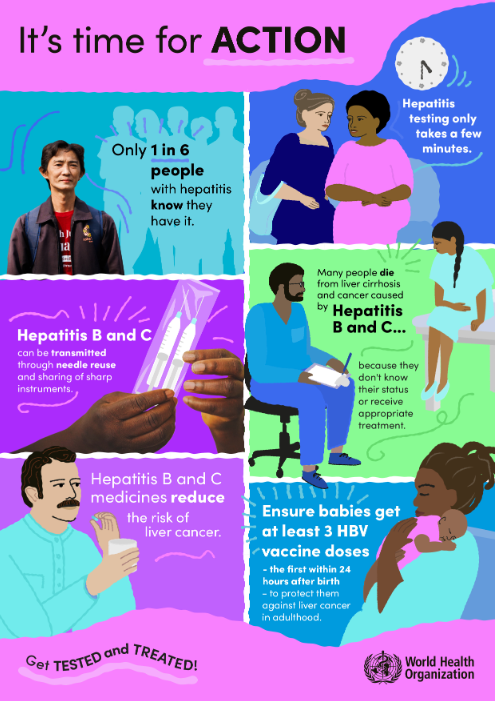
- Are STIs and STDs the Same Thing?
- Bacterial Vaginosis (BV)
- Chlamydia
- Chlamydia
- Condoms
- Coronavirus Disease (COVID-19) Science Conversation: Science In 5: Episode #96 – Mpox Update
- FAQs: Chlamydia, Gonorrhea and Syphilis
- FAQs: Genital Herpes
- FAQs: How To Prevent Sexually Transmitted Infections (STIs)
- FAQs: Human Papillomavirus (HPV): Infection and Vaccination
- Genital Herpes
- Genital Herpes
- Genital Warts
- Get Tested for Chlamydia and Gonorrhea
- Get Tested for HIV
- Get Tested: National HIV, STD and Hepatitis Testing – Frequently Asked Questions
- Gonorrhea
- Gonorrhea
- HIV
- HIV and AIDS
- HIV and Other STDs
- HPV
- HPV (Human Papillomavirus)
- HPV (Human Papillomavirus) [Vaccine]
- HPV Facts for Women

- HPV Infection May Cause Throat, Mouth Cancer
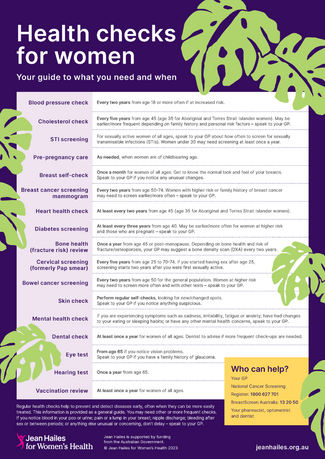 HPV and Cancer
HPV and Cancer- Health Checks for Women
- Hepatitis B
- Hepatitis C
- How HIV Spreads
- How To Tell Someone That You Have an STD or STI
- Human Papillomavirus (HPV)
- Human Papillomavirus (HPV)
- Human Papillomavirus: HPV Infection
- Improving Lives by Detecting Sexually Transmitted Infections Early
- Internal Female Condoms
- International HPV Awareness Day [04 March 2024
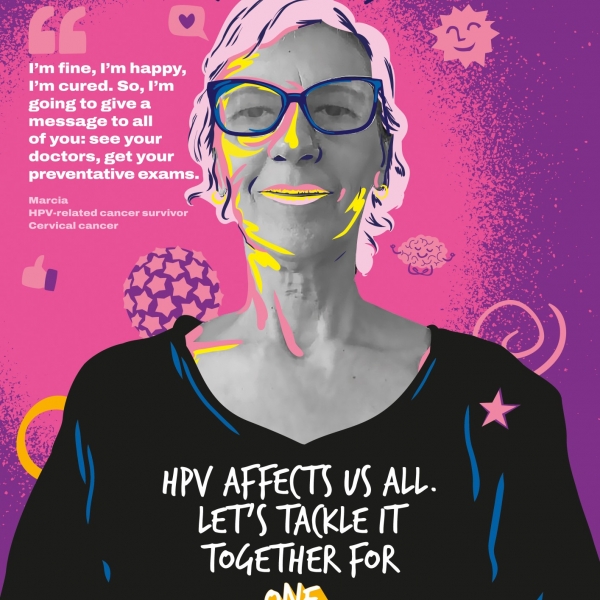
- Mayo Clinic Minute: ABCs of Hepatitis [+ Video Courtesy: Mayo Clinic News Network]
- Mayo Clinic Minute: Reducing the Risks of Sexually Transmitted Infections [+ Video Courtesy: Mayo Clinic News Network]
- Mayo Clinic Minute: Syphilis Surge Is Cause for Concern [+ Video Courtesy: Mayo Clinic News Network]
- Mayo Clinic Minute: The Link Between HPV and Throat Cancer [+ Video Courtesy: Mayo Clinic]
- Mayo Clinic Minute: What Is Hepatitis C? [+ Video Courtesy: Mayo Clinic]
- Mayo Clinic Minute: Why You Should Come Out As LGBTQ To Your Health Care Team [+ Video Courtesy: Mayo Clinic]
- Mpox
- Mpox (Monkeypox)
- Mpox (Monkeypox)
- Mycoplasma Genitalium (Mgen)
- National HIV Testing Day – 2024 [June 27]
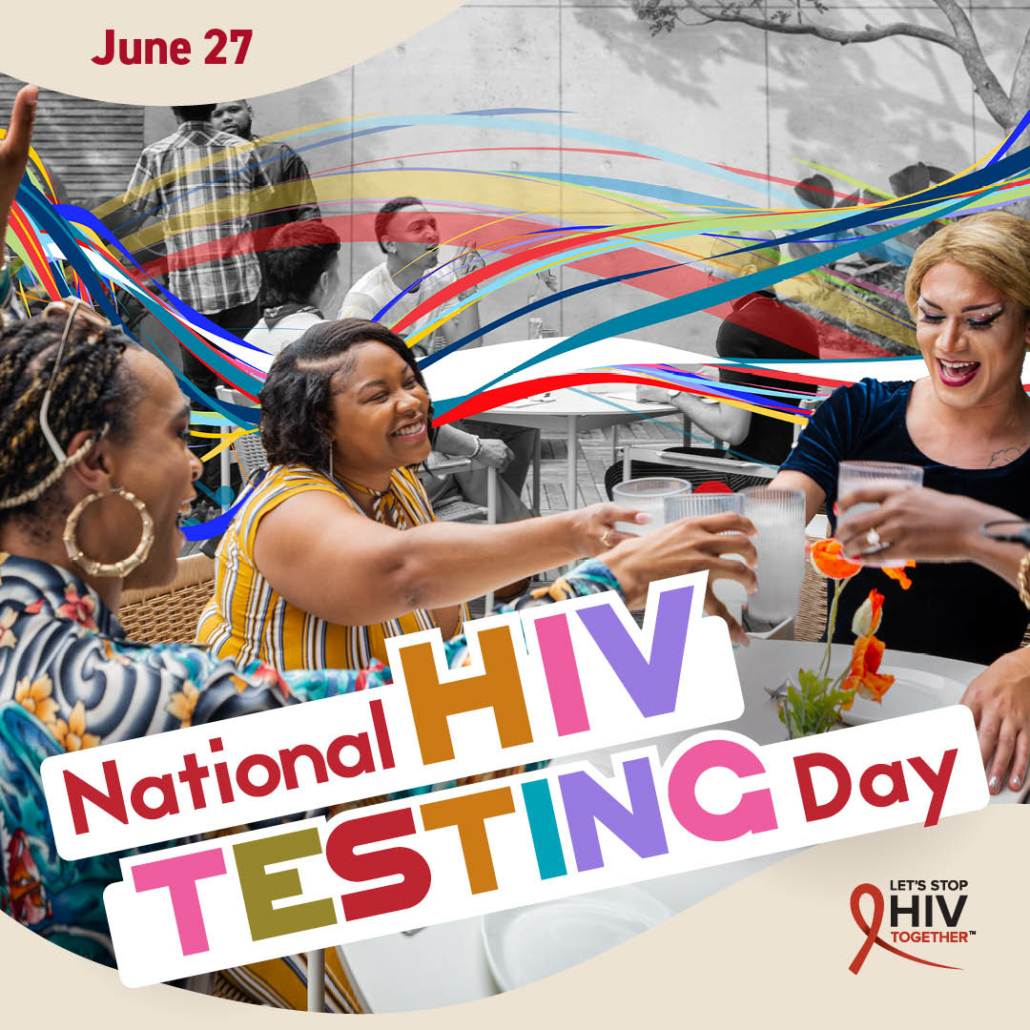
- National Women’s Health Week [12-18 May 2024, United States]: Day 2 – May 13: Safe Sexual Health
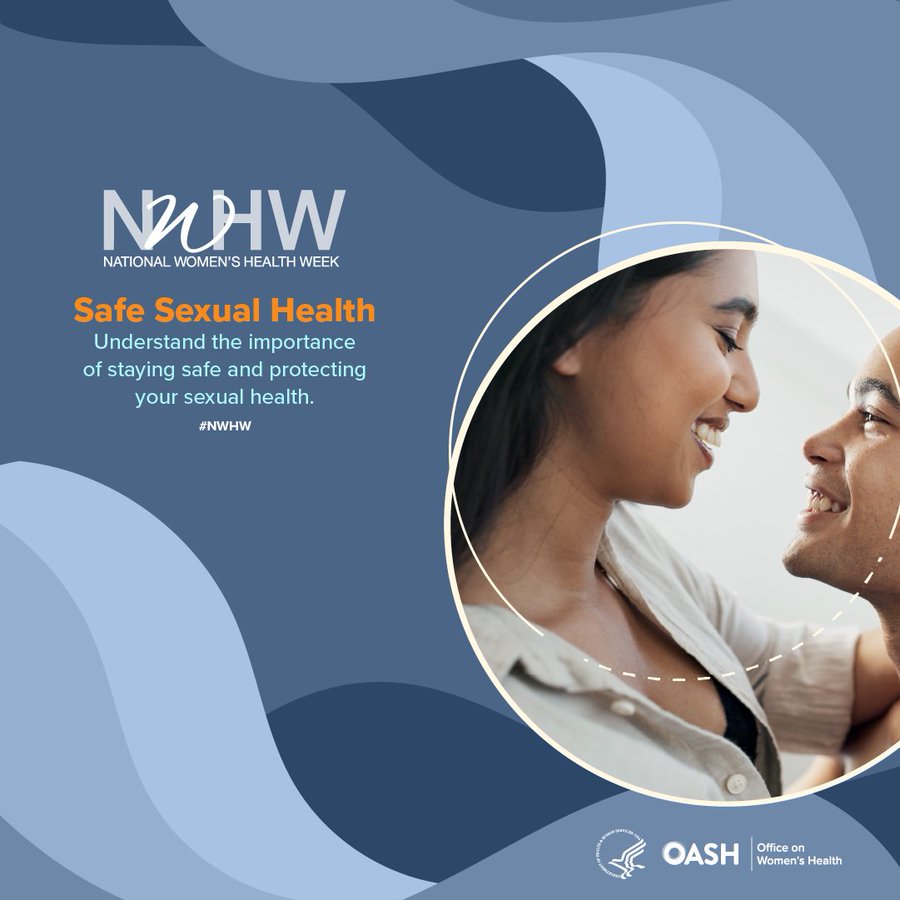
- New Report Flags Major Increase In Sexually Transmitted Infections, Amidst Challenges In HIV and Hepatitis [21 May 2024]
- Pelvic Inflammatory Disease (PID)
- Pelvic Inflammatory Disease (PID)
- Rising Rates of Chlamydia, Gonorrhea, and Syphilis With Laura H. Bachmann, MD, MPH, FIDSA, FACP
- STD Testing: Conversation Starters
- STD Tests
- STIs A To Z
- STI Awareness Week [April 14-20, 2024, United States]
- STIs on the Rise In Older Women
- Safer Sex and Sexually Transmitted Infections (STIs)
- Sex Activities and Risk
- Sex During Vaginal Infection: Is It Harmful?
- Sex and Sexuality
- Sexual Health
- Sexual Health for Lesbian and Bisexual Women
- Sexual Healthcare In Your-20s and Beyond
- Sexually Transmitted Diseases (STDs)
- Sexually Transmitted Diseases (STDs): Symptoms & Causes
- Sexually Transmitted Infections
- Sexually Transmitted Infections
- Sexually Transmitted Infections (STIs)
- Sexually Transmitted Infections (STIs)
- Sexually Transmitted Infections (STIs)
- Sexually Transmitted Infections (STIs): About Genital HPV Infection
- Sexually Transmitted Infections (STIs): About STI Risk and Oral Sex
- Sexually Transmitted Infections (STIs): About Sexually Transmitted Infections (STIs)
- Sexually Transmitted Infections (STIs): About Sexually Transmitted Infections (STIs): STI or STD?
- Sexually Transmitted Infections (STIs): About Sexually Transmitted Infections (STIs): Types
- Sexually Transmitted Infections (STIs): Fact Sheets
- Sexually Transmitted Infections (STIs): Getting Tested for STIs
- Sexually Transmitted Infections (STIs): How To Prevent STIs
- Sexually Transmitted Infections, All You Need To Know – Podcast
- Syphilis
- Syphilis
- Syphilis
- Syphilis: A Rising Community Presence
- Trichomoniasis
- Trichomoniasis
- Trichomoniasis
- WHO Releases New Guidance To Improve Testing and Diagnosis of Sexually Transmitted Infections
- World Hepatitis Day 2024 [28 July]

Sources
Where may I find the Sources quoted?
You may find the Sources quoted at:
Sources
- Sexual Health & Menopause Online: Reminders and Resources – Safe Sex Rules Still Apply. North American Menopause Society https://www.menopause.org/for-women/sexual-health-menopause-online/reminders-and-resources/safe-sex-rules-still-apply Accessed: 14 May 2024
- Sexually Transmitted Infections. Page Last Updated: 29 December 2022. Office on Women’s Health, United States Department of Health and Human Services, Womenshealth.gov https://www.womenshealth.gov/a-z-topics/sexually-transmitted-infections Accessed: 14 May 2024
- Safer Sex and Sexually Transmitted Infections (STIs): Sexually Transmissible Infections (STIs). Last Updated: 11 May 2024 | Last Revised: 12 December 2023. Jean Hailes for Women’s Health https://jeanhailes.org.au/health-a-z/sex-sexual-health/safer-sex-stis/ Accessed: 14 May 2024
- Sexually Transmitted Diseases: Summary – What Are Sexually Transmitted Diseases (STDs)? Last Updated: 08 May 2024. MedlinePlus https://www.nlm.nih.gov/medlineplus/sexuallytransmitteddiseases.html Accessed: 14 May 2024
- Sexually Transmitted Infections (STIs): Overview. 10 July 2023. World Health Organization https://www.who.int/en/news-room/fact-sheets/detail/sexually-transmitted-infections-(stis) Accessed: 14 May 2024
- Sexually Transmitted Diseases (STDs): Symptoms & Causes – Causes. 08 September 2023. Mayo Clinic https://www.mayoclinic.org/diseases-conditions/sexually-transmitted-diseases-stds/symptoms-causes/syc-20351240 Accessed: 14 May 2024
- Sexually Transmitted Infections (STIs): About Genital HPV Infection – Overview: What Is Human Papillomavirus (HPV)? 06 February 2024. Centers for Disease Control and Prevention https://www.cdc.gov/sti/about/about-genital-hpv-infection.html Accessed: 14 May 2024
- Sexually Transmitted Infections (STIs): Key Facts. 10 July 2023. World Health Organization https://www.who.int/en/news-room/fact-sheets/detail/sexually-transmitted-infections-(stis) Accessed: 14 May 2024
- Cervical Cancer: Causes. 05 March 2024. World Health Organization https://www.cdc.gov/std/hpv/stdfact-hpv.htm Accessed: 14 May 2024
- Sexually Transmitted Infections (STIs): Key Facts. 10 July 2023. World Health Organization https://www.who.int/en/news-room/fact-sheets/detail/sexually-transmitted-infections-(stis) Accessed: 14 May 2024
- Safer Sex and Sexually Transmitted Infections (STIs): How to Have Safer Sex. Last Updated: 11 May 2024 | Last Reviewed: 12 December 2023. Jean Hailes for Women’s Health https://jeanhailes.org.au/health-a-z/sex-sexual-health/safer-sex-stis/ Accessed: 14 May 2024
- Safer Sex and Sexually Transmitted Infections (STIs): How To Have Safer Sex. Last Updated: 11 May 2024 | Last Reviewed: 12 December 2023. Jean Hailes for Women’s Health https://jeanhailes.org.au/health-a-z/sex-sexual-health/safer-sex-stis Accessed: 14 May 2024
- Sexual Health & Menopause Online: Reminders and Resources – Safe Sex Rules Still Apply. North American Menopause Society https://www.menopause.org/for-women/sexual-health-menopause-online/reminders-and-resources/safe-sex-rules-still-apply Accessed: 14 May 2024
- Sexual Health & Menopause Online: Reminders and Resources – Safe Sex Rules Still Apply. North American Menopause Society https://www.menopause.org/for-women/sexual-health-menopause-online/reminders-and-resources/safe-sex-rules-still-apply Accessed: 14 May 2024
- Safer Sex and Sexually Transmitted Infections (STIs): Safer Sex. Last Updated: 11 May 2024 | Last Revised: 12 December 2023. Jean Hailes for Women’s Health https://jeanhailes.org.au/health-a-z/sex-sexual-health/safer-sex-stis/ Accessed: 14 May 2024
- Sexual Health & Menopause Online: Contraception – You May Need It Longer Than You May Think: Many Choices for the Midlife Woman. North American Menopause Society https://www.menopause.org/for-women/sexual-health-menopause-online/reminders-and-resources/contraception-you-need-it-longer-than-you-may-think Accessed: 14 May 2024
- Contraception. Coitally-Dependent Barrier Methods — (c) Female Condom. Content Updated: July 2022. Australasian Menopause Society’s https://www.menopause.org.au/hp/information-sheets/280-contraception Accessed: 14 May 2024
- Sexually Transmitted Infections: Does A Pap Test Screen for STIs? Page Last Updated: 29 December 2022. Office on Women’s Health, United States Department of Health and Human Services, Womenshealth.gov https://www.womenshealth.gov/a-z-topics/sexually-transmitted-infections Accessed: 14 May 2024
- HIV: How HIV Spreads – Risk Factors: Other Sexually Transmitted Infections. 18 January 2024. Centers for Disease Control and Prevention https://www.cdc.gov/hiv/causes/index.html Accessed: 14 May 2024
- Safer Sex and Sexually Transmitted Infections (STIs): What To Do If You Have An STI. Last Updated: 11 May 2024 | Last Reviewed: 12 December 2023. Jean Hailes for Women’s Health https://jeanhailes.org.au/health-a-z/sex-sexual-health/safer-sex-stis/ Accessed: 14 May 2024



